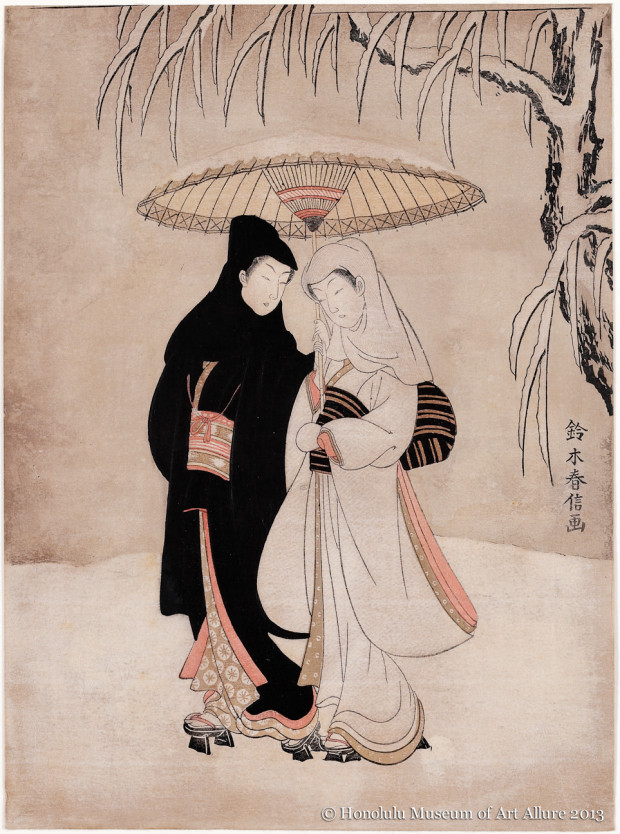Suzuki Harunobu (1725?-1770)
Lovers Sharing an Umbrella
Japan, Edo period, c. 1760
Woodblock print; ink and color on paper
Gift of James A. Michener, 1991
Honolulu Museum of Art
(21736)
The poet Noguchi Yonejirō (father of sculptor Isamu Noguchi) said of this famous design:
If young Harunobu’s Lovers Sharing an Umbrella did not exist, I would only wonder, what kind of lonely and desolate thing is this ukiyo-e of ours?
The stillness of the scene perfectly captures the traditional Japanese aesthetic ideal of wabi, an appreciation for the unpretentious, quiet beauty of an unscripted moment in time (perhaps the nearest comparison might be Hiroshige’s Night Snow at Kambara from seventy years later).
The scene of a couple under an umbrella in a snowscape superbly conveys the perfect absorption of young love, the total identification of oneself with one’s beloved in a hermetic world that excludes all opposition. Contradictions of male and female, black and white have been subsumed under a greater idealized harmony, to the extent that even the natural rhythms of the seasons bend to the will of the artist (winter was traditionally associated with old age and death, while spring would have been a more natural, if less startlingly innovative setting for the flowering of tender affections).
View info on museum database (enabled through support by the Robert F. Lange Foundation)


